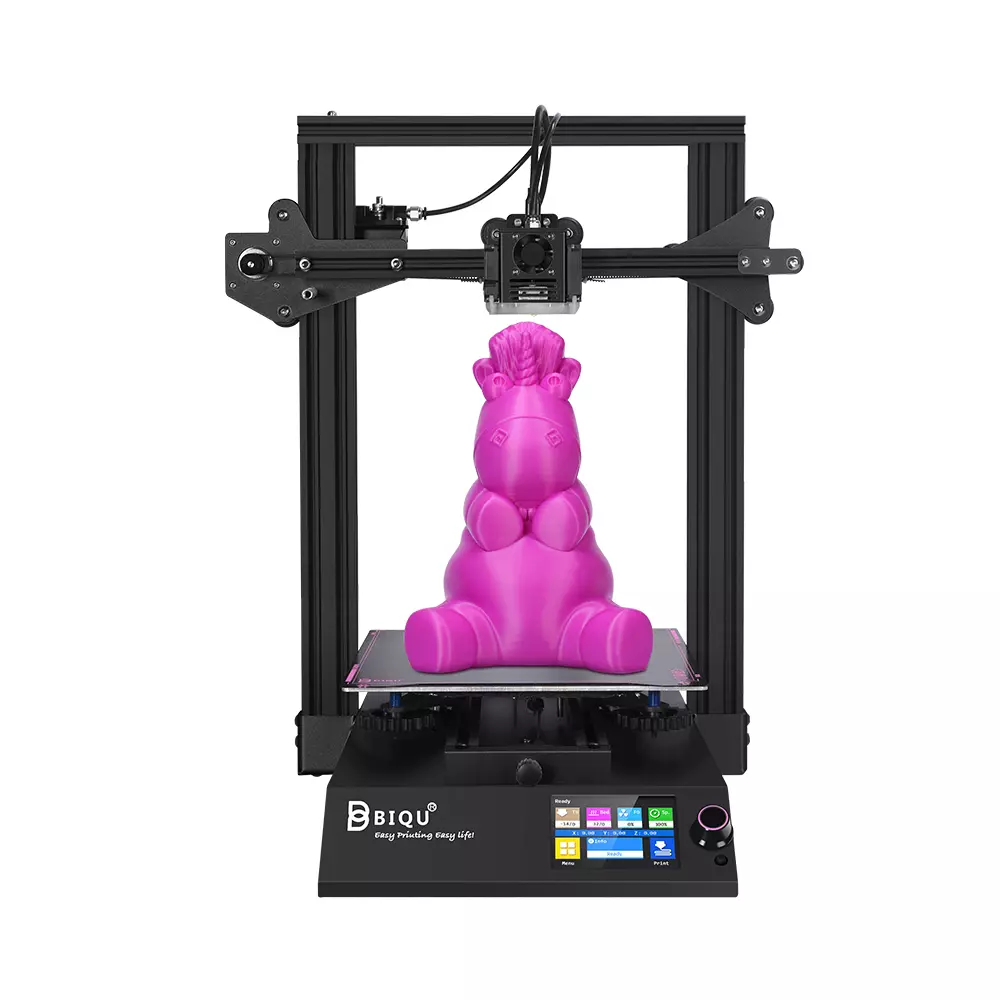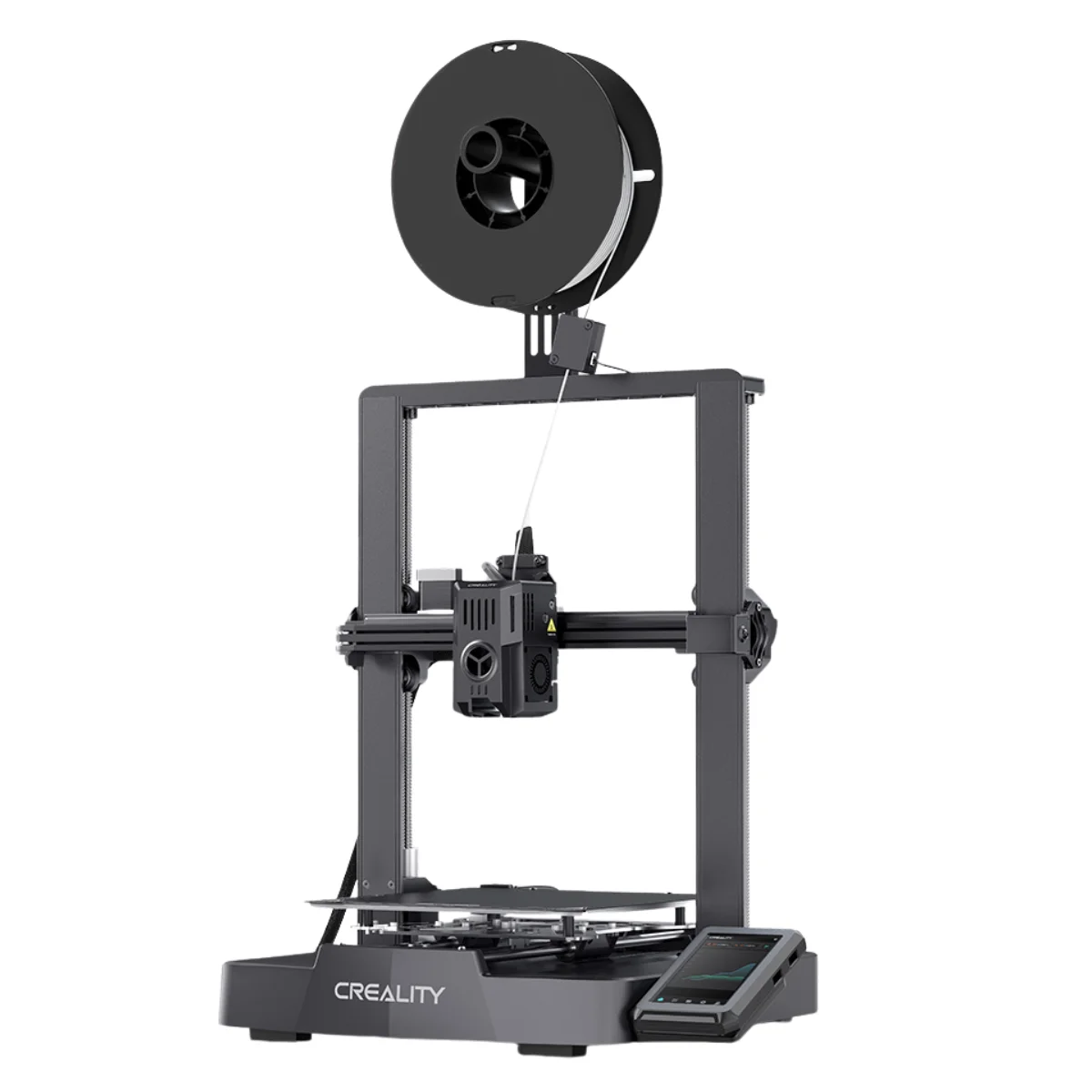Compare BIQU B1 vs Ender 3 V3 KE
Comparison between the best 3D printers
Choose the best 3D printer at the best price. The cheapest 3D printers are here.
Buy a 3D printer here with 3D Fila.
 |
 |
|
| Model | BIQU B1 |
Ender 3 V3 KE[BUY Ender 3 V3 KE] |
| Printing Material | Filament | Filament |
| Buy Filament for BigTreeTech BIQU B1 | Buy Filament forCreality Ender 3 V3 KE | |
| Estimated price | $269,00 | $279,00 |
| Manufacturer | BigTreeTech | Creality |
| Release Year | 2020 | 2023 |
| Print Volume [mm] | 235x235x270 | 220x220x240 |
| Printer Size [mm] | 412x402x492 | 433x366x490 |
| Weight [kg] | 8,00 | 7,8 |
| Power Loss Recovery | YES | YES |
| Enclosed printer | NO | NO |
| Bed Leveling | Manual | Automatic |
| Filament End Sensor | YES | YES |
| Bed type | Heated | Heated |
| Power supply system | Bowden | Direct Drive |
| Standard nozzle | 0,4 | 0,4 |
| Maximum Nozzle Temperature [°C] | 250 | 300 |
| Maximum Bed Temperature [°C] | 100 | 100 |
| Maximum printing speed [mm/s] | 100 | 500 |
| Filament holder | YES | YES |
| Camera for supervision | NO | NO |
| Recommended filaments | PLA, TPU, ABS, PETG | PLA, PETG e TPU (95A+), ASA |
| Recommended slicers | Cura, Simplify, Slic3r | Creality Print, Cura 5.0 ou superior, Prusa Slicer, Orca |
| Maximum Resolution [mm] | 0,1 | 0,1 |
| Processor | 32 Bits BTT SKR V 1.4 | 32-bit Silenciosa |
| Display | Touchscreen TFT 3,5'' | Touchscreen 4,3'' |
| Power Supply | 24V / 360W | 350 W |
| Connectivity | SD / USB | USB drive, LAN, Creality Cloud APP |
| Operating systems | Windows, Mac, Linux | Windows, Linux, Macbook |
| Date of registration in the system | 2021-04-14 | 2024-03-06 |
| Release date | 2020 | 2023 |
| Extra features | The BIQU B1 is an advanced 3D printer with a silent 32-bit BTT SKR V1.4 motherboard and ARM Cortex-M3 CPU, offering DIY interfaces (I2C, SPI, WiFi) and dual Z-axis. Its dual BTT B1 TFT35 V3.0 operating system allows real-time monitoring and multiple printing modes, including G-code visualization effects. It stands out for its BIQU SSS (Super Spring Steel), ensuring easy model adhesion and simplified removal, with the possibility of using it on both sides. It includes a filament sensor, automatically pausing printing in case of filament breakage. The multicolored RGB lights integrated into the hotend allow you to view the printing status even at night. Additional notes include the need for a BIQU-specific Type-C cable and extra interfaces for smart filament sensor and BL Touch. | The Ender 3 V3 KE, an advancement in the Ender line, achieves print speeds of up to 500mm/s with its touchscreen and WiFi connectivity. Although it has a slightly smaller print area than the SE model, it makes up for it with superior print quality. Its robust design, high-quality components, and intuitive wireless control are appreciated, although Creality's mobile app lacks practicality and does not have a closed system. It stands out for its linear track on the X-axis for stability at high speeds and the hotend that supports up to 300°C, ideal for high-temperature filaments. |
| Support for multiple colors and materials (AMS and CFS) | NO | NO |
Notes * |
||
| Cost-benefit | 7 / 10 | 7 / 10 |
| Hardware | 2 / 10 | 2.8 / 10 |
| Tela | . | . |
| Print volume | 3 / 10 | 3 / 10 |
| Performance | 1 / 10 | 4 / 10 |
| [BUY Ender 3 V3 KE] |
Conclusion |
| ### Conclusion When comparing the BIQU B1 and the Ender 3 V3 KE, both printers demonstrate strong features for their price points, yet they cater to somewhat different user needs. The **BIQU B1**, released in 2020, offers notable features such as filament end sensors, manual bed leveling, and a good variety of recommended filament materials. Its powerful 32-bit motherboard and dual Z-axis provide advanced control for users who enjoy customization and tweaking their prints. However, the BIQU B1 falls short in printing speed and automatic features compared to its competitor. On the other hand, the **Ender 3 V3 KE**, launched in 2023, boasts a more modern design with automatic bed leveling and a significant maximum print speed of 500 mm/s. Its touchscreen interface and enhanced connectivity options, including support for LAN and Creality's cloud app, appeal to users looking for efficiency and ease of use. The higher maximum nozzle temperature enables compatibility with a wider range of advanced materials, potentially enhancing print quality for demanding applications. Price-wise, the two models are closely matched, with slight differences; however, the performance and technological advancements of the Ender 3 V3 KE make it a more attractive option for users seeking high-speed printing and advanced functionality. Conversely, the BIQU B1 is likely to appeal to hobbyists or those who prefer a more hands-on approach to 3D printing. Overall, the Ender 3 V3 KE leads in terms of features, user-friendliness, and performance, making it the better choice for most users today. |

